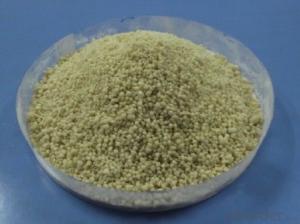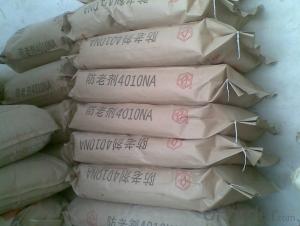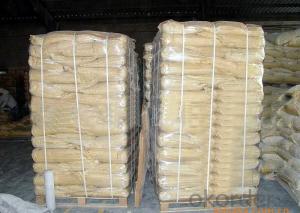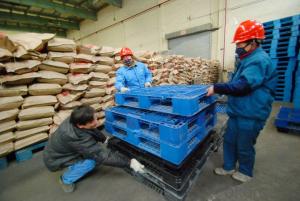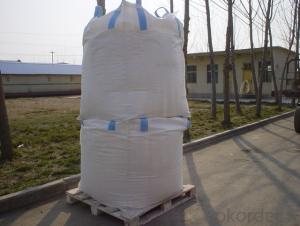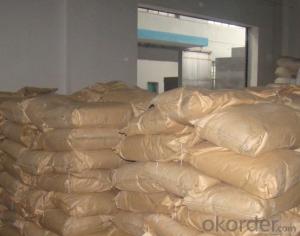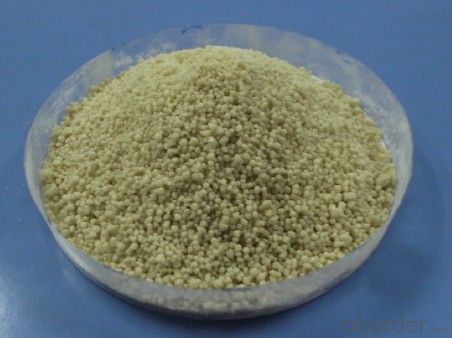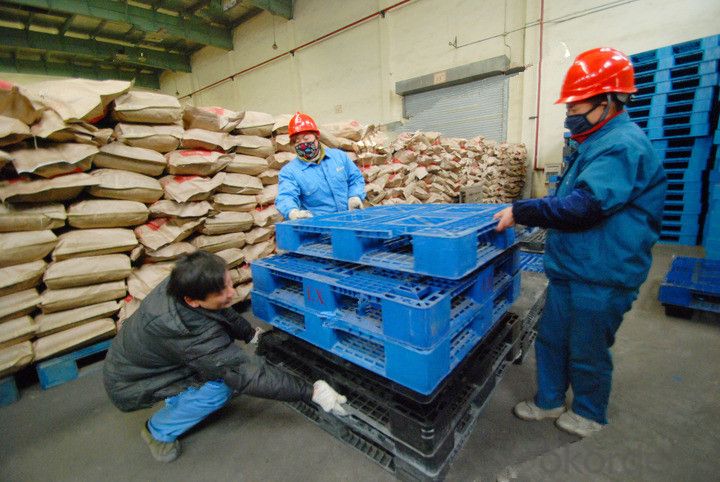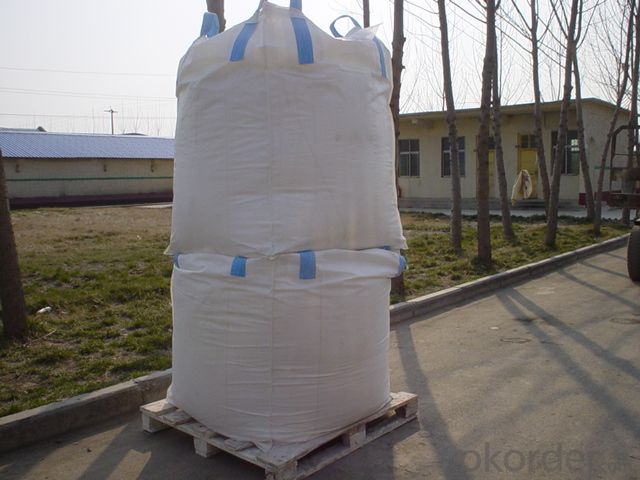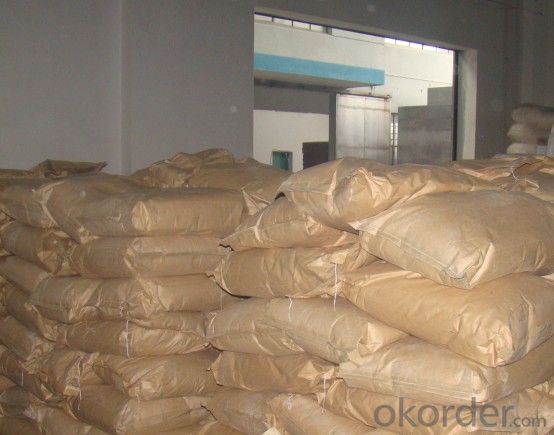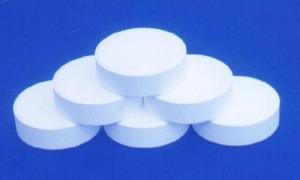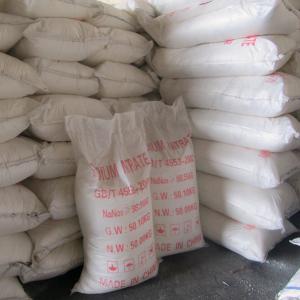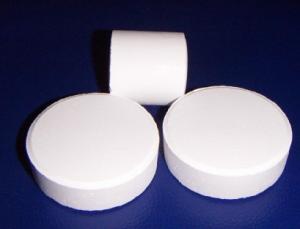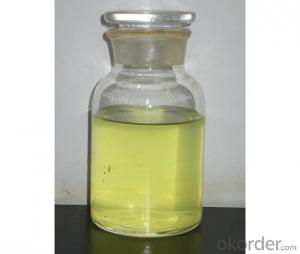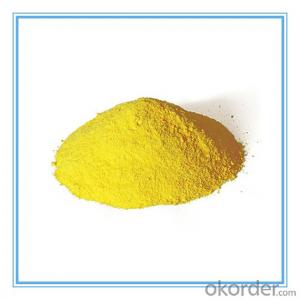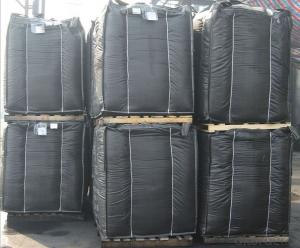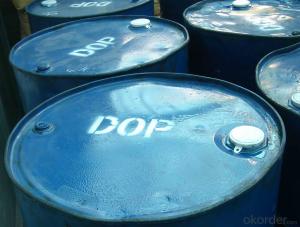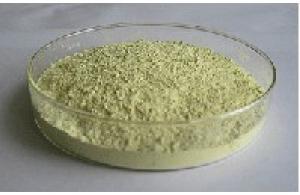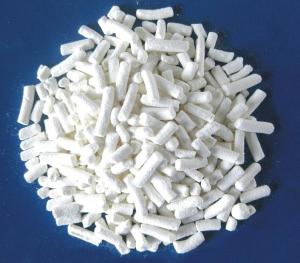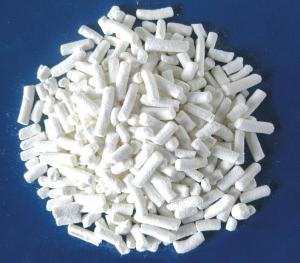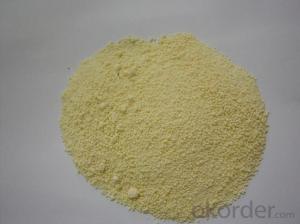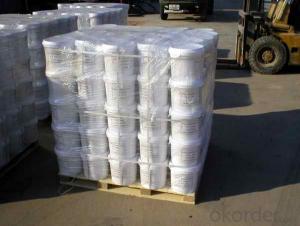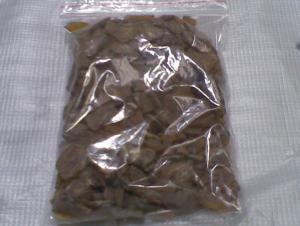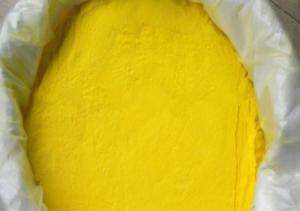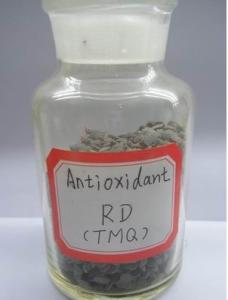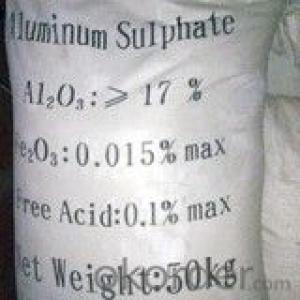RUBBER VULCANIZING ACCELERATOR·DPG (D) MODEL
- Loading Port:
- Tianjin
- Payment Terms:
- TT OR LC
- Min Order Qty:
- 25 m.t.
- Supply Capability:
- 12000 m.t./month
OKorder Service Pledge
OKorder Financial Service
You Might Also Like
RUBBER VULCANIZING ACCELERATOR-DPG(D)
Chemical Name: Diphenyl guanidine
Molecular Formula: C13H13N3
Molecular Weight:211.27
CAS NO。: 102-06-7
Executive standard:Q/CNPC55-2001
Specification
| Index | |
First-class products | Acceptable end-product | |
Appearance(Visual inspection) | white powder | Greyish-white powder |
Initial M.P, oC ≥ | 145.0 | 144.0 |
Loss on drying, % ≤ | 0.20 | 0.30 |
Ash, % ≤ | 0.30 | 0.40 |
Residues on 150μm sieve,% | 0.10 | 0.10 |
Residues on 63μm,% ≤ | 0.50 | 0.50 |
Properties: Grayish-white or white powder notaste, nontoxic . Density is 1.13--1.19. Soluble in acetone, ethyl acetate, benzene, alcohol, slightly soluble in carbon tetrachloride Insoluble in water and gasoline.
Application: mainly used for natural rubber syntheic the medium-speed accelerator. Used in thiazoles, Autumn Lamb, and the second category of iodine acid catalyst for the active agent, and agent for DM, TMTD used, can be used for continuous vulcanization. Mainly used in the manufacture of tires, plastic sheet, soles and industrial products, rigid and thick plastic products.
Packaging: Polypropylene knitted bags lined with polyethylene bags.Net weight 25kg per bag.
Storage: Keep container tightly closed in a cool, well-ventilated place. The recommended maximum storage life is 2 years when stored under normal conditions.
Note: The product could be oiled and pelleted apon customer request.
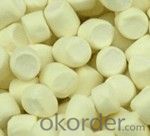
- Q: Exemplify the use of green catalysts in green chemistry
- The role of the catalyst is to control (speed up or slow down) the rate of chemical reactions. If you have to add a "green", perhaps this catalyst also requires not to pollute the environment or harmful to humans. Such as fertilizer used in the manufacture of platinum catalysis should belong to this.
- Q: What is a catalyst in a chemical reaction?
- Hi Ganah! A catalyst is a substance that increases the rate of a chemical reaction without itself being used up in the reaction. They lower the activation energy for a reaction and also speed up the rate of the reaction (both in reverse and forward reactions). Let's look at a generic chemical reaction: A + B---C + D C + D---B + E Here, the catalyst is substance B because it is part of the chemical reaction but then it is not used up in the net reaction. See how it seems to be used up in the first step, but by the second step, the catalyst is made once again. The net reaction is A + B--->B + E and you can see how it is not consumed in the reaction. There are also 3 types of catalysts. Heterogeneous catalysts are catalysts that are in different phases than the reactants. An example would be like a reaction between two solids but a liquid is added to speed up the reaction. The liquid is in a different state of matter than the solids but it can still function as a heterogeneous catalyst. Homogeneous catalysts are catalysts that are in the same states of matter as the reactants. An example would then be ethyl acetate reacting with water to form acetic acid and ethanol with an acidic catalyst. They would all be liquids. Lastly, there are enzyme catalysts. These are proteins in your body that speed up biological reactions by reacting with substrates. I hope this helped and good luck with chem!
- Q: What are the characteristics of the catalyst in the chemical reaction?
- In simple terms: the catalyst itself is involved in the reaction, the quality of the reaction before and after the same, the ingredients do not change. The catalyst can change the rate of chemical reaction, increase the rate of reaction called catalyst, slow the inhibitor.
- Q: 1. Catalysts can help to bring the reactants together in the correct orientation2. The chemical formula of a catalyst is written on the left hand side (reactant) side of an equation.3. Catalysts can provide a surface on which the reaction occurs.4. Catalysts increase the activation energy.5. Catalysts increase the magnitude of the equilibrium constant, thus favoring product formation.6. "Enzymes" are biochemical catalysts.7. Catalysts increase the rate of a reaction.8. Catalysts are slowly used up during the reaction and need to be replaced.
- 7 is definetly true
- Q: What is the difference between electrocatalysis and general chemical catalysis?
- General chemical catalysis is a catalyst, and electrocatalysis also need to be carried out under the conditions of the electric field
- Q: the heterogenous catalyst ZSM-5 IS used to convert ?
- Zeolite-based heterogeneous catalysts are used by industrial chemical companies in the interconversion of hydrocarbons and the alkylation of aromatic compounds. A very good example is the zeolite ZSM-5. This zeolite, developed by Mobil Oil, is an aluminosilicate zeolite with a high silica and low alumininum content. Its structure is based on channels with insecting tunnels. The aluminium sites are very acidic. The substitution of Al3+in place of the tetrahedral Si4+ silca requires the presence of an added postive charge. When this is H+, the acidity of the zeolite is very high. The reaction and catalysis chemistry of the ZSM-5 is due to this acidity. The ZSM-5 zeolite catalyst is used in the petroleum industry for hydrocarbon interconversion. An example use is in the isomerizations of xylene- from meta to para-xylene. The acidic zeolite promotes carbocation isomerizations. There are two suggested mechanisms for this type of isomerizations. Firstly shape may play a role. Perhaps para-xylene has a shape which allows it to diffuse rapidly through the zeolite structure, whereas as meta-xylene takes longer to pass through the zeolite and thus has more opportunity to be converted into the para-xylene. Secondly, is that the orientation of reactive intermediates within the zeolite channels favors specifically para-xylene.
- Q: explain how a catalyst can affect the rate of reaction but not be in the overall equation.?
- a catalyst is a substance that speeds up the rate of reactions that would already happen (the reactions are spontaneous) but would take a long long time to occur. Every reaction proceeds from a level of high energy to a lower level of energy, but in order to start going downhill you need to get up, in affect getting more energy than the reactants have now. This is because the transition state, or what the reactnat/product is in the middle of the reaction, is less stable and requires more energy than the reactants. Catalysts lower the extra energy needed (called activation energy) to a level that the reactants already have, and the reaction occurs.
- Q: The future direction of employment how, in what kind of units to do what work, how the closure rate? The
- Generally in the chemical plant to do engineering design engineers, the past few years, science and engineering graduates generally do not worry about work.
- Q: Can manganese dioxide be used as a catalyst for various chemical reactions?
- Manganese dioxide can be a catalyst for hydrogen peroxide decomposition, a catalyst for the preparation of chlorine gas from potassium chlorate, and the like can be reactants
- Q: the process of which the heterogeneous catalyst work in vehicles. a step by step instruction in how they work. :)
- The Reduction Catalyst The reduction catalyst is the first stage of the catalytic converter. It uses platinum and rhodium to help reduce the NOx emissions. When an NO or NO2 molecule contacts the catalyst, the catalyst rips the nitrogen atom out of the molecule and holds on to it, freeing the oxygen in the form of O2. The nitrogen atoms bond with other nitrogen atoms that are also stuck to the catalyst, forming N2. For example: 2NO =N2 + O2 or 2NO2 =N2 + 2O2 The Oxidization Catalyst The oxidation catalyst is the second stage of the catalytic converter. It reduces the unburned hydrocarbons and carbon monoxide by burning (oxidizing) them over a platinum and palladium catalyst. This catalyst aids the reaction of the CO and hydrocarbons with the remaining oxygen in the exhaust gas. For example: 2CO + O2 =2CO2
Send your message to us
RUBBER VULCANIZING ACCELERATOR·DPG (D) MODEL
- Loading Port:
- Tianjin
- Payment Terms:
- TT OR LC
- Min Order Qty:
- 25 m.t.
- Supply Capability:
- 12000 m.t./month
OKorder Service Pledge
OKorder Financial Service
Similar products
Hot products
Hot Searches
Related keywords
